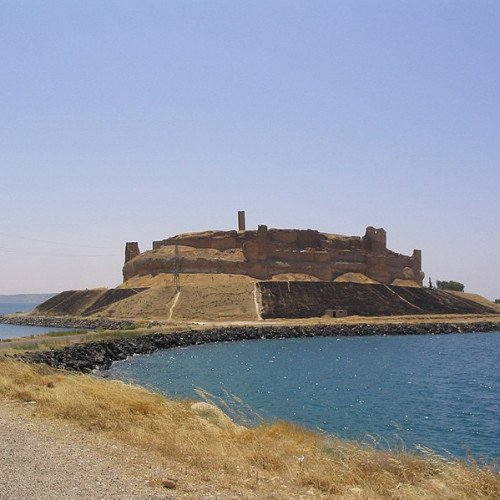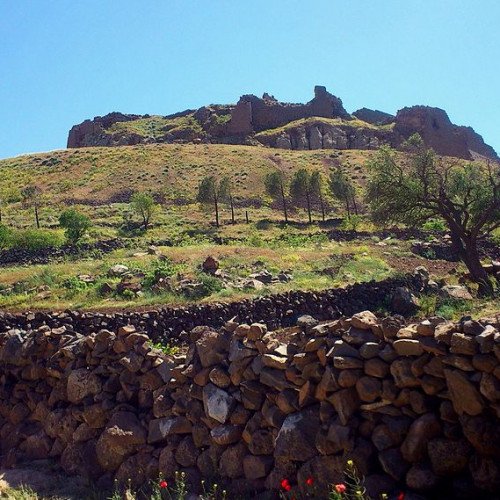Castles of "Syria" QAL'AT JA'BAR vs SALKHAD

QAL'AT JA'BAR
Qal'at Ja'bar (Arabic: قلعة جعبر, Turkish: Caber Kalesi) is a castle on the left bank of Lake Assad in Raqqa Governorate, Syria. Its site, formerly a prominent hill-top overlooking the Euphrates Valley, is now an island in Lake Assad that can only be reached by an artificial causeway. Although the hilltop on which the castle sits was possibly already fortified in the 7th century, the current structures are primarily the work of Nur ad-Din, who rebuilt the castle from 1168 onwards. Since 1965, several excavations have been carried out in and around the castle, as well as restoration works of the walls and towers. The castle was a Turkish exclave between 1921 and 1973. It is not exactly known when the hilltop of Qal'at Ja'bar was first fortified. The site was already known as "Dawsar" in pre-Islamic times and was located along a route connecting Raqqa with the west. Qal'at Dawsar was mentioned in 1040/41 when the Fatimid governor of Syria Anushtakin al-Dizbari was on a campaign in the area. At an unspecified point afterward it came into the possession of a certain Ja'bar ibn Sabiq, a member of the tribe of Banu Numayr or Banu Qushayr. He was killed there in 1071/72. It developed a reputation for being a haven for Bedouin highwaymen from the two tribes.[3] In 1086 it was conquered by the Seljuks under Malik-Shah I, who granted it to the Uqaylid commander of the Citadel of Aleppo, Salim ibn Malik ibn Badran, as compensation for his surrender of Aleppo. The castle may have been built by the Numayr, but more likely its consutruction occurred under Salim.
Statistics for this Xoptio

SALKHAD
Salkhad (Arabic: صَلْخَد Ṣalḫad) is a Syrian city in the As-Suwayda Governorate, southern Syria. It is the capital of Salkhad District, one of the governorate's three districts. It has a population of 15,000 inhabitants. It is located at 1350 metres above sea level in the central Jabal el Druze highlands. Mentioned several times in the Bible as "Salcah", as a settlement in biblical Bashan. During the second century BC Salcah was a flourishing Nabataean city, where the gods Dushara and Allat were worshiped. Afterwards it was incorporated into the Roman province of Arabia, it was one of the important cities in Hauran during Roman and later Byzantine epochs, Salkhad is indicated in the Madaba mosaic map of the sixth century AD. Due to the strategic position of the city overlooking Hauran plains to the west, the Ayyubid dynasty built a fortress in Salkhad between 1214–1247 to counter a possible attack of the Crusades into inner Hauran. It has also been said that Al-Afdal was exiled here by his uncle and brother. The importance of the city decreased after the Crusades, and it was occasionally overrun by Bedouins seeking pasture in the summer for their flocks. In 1596, Salkhad appeared in the Ottoman tax registers as Salhad (Sarhad) and was part of the nahiya of Bani Malik as-Sadir in the Hauran Sanjak. It had a Muslim population consisting of 55 households and 25 bachelors, and a Christian population of 50 households and 20 bachelors. The residents paid a fixed tax-rate of 40% on wheat, barley, summer crops, goats and beehives; a total of 36,500 akçe.